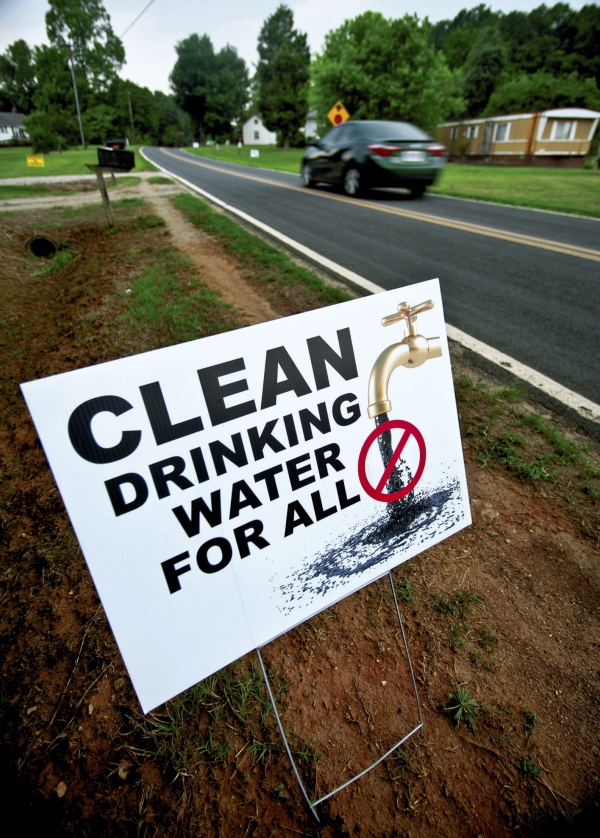Editorial: More light on Dukeville water questions
Published 9:35 pm Monday, August 17, 2015

- Residents long Leonard Road in close proximity to site of Buck Station have placed signs in their yards asking for clean drinking water. A coal ash pond is located nearby and area wells are said to be contaminated with materials thought to come from the ponds.
Duke Energy has a mess on its hands when it comes to coal ash ponds; there’s no question about that. After tons of coal ash spilled into the Dan River from a Duke pit in February 2014 and leaks at other sites came to light, the company negotiated a settlement that left it with one of the largest federal criminal fines in North Carolina history.
It is not clear, however, that the company’s coal ash pits have led to the contamination of nearby wells. In fact evidence is mounting to the contrary. And the standards by which wells near Duke’s Buck Station in Rowan and other former coal-burning plants were determined to be contaminated also deserve scrutiny.
On Monday, the N.C. Department of Environment and Natural Resources released findings that showed water from 20 of 24 wells tested well away from the coal ash pits had high levels of the same contaminants found in wells near Buck — levels that had prompted DENR to warn residents against drinking their well water.
This background testing, as the state calls it, reinforces Duke’s contention that the vanadium and hexavalent chromium found in Dukeville wells occurred naturally as a result of their heavy presence in the region’s soil, not because of leaks from coal ash ponds. The company has pointed to geological maps showing whole swaths of the state where the metals were found in the soil. Twenty-four well tests cannot rule out culpability on Duke’s part, but the results do shed more light on the question.
So, what about the state’s standards? According to Josh Bergeron’s report in Sunday’s Salisbury Post, water from several municipal water systems in the state, including Salisbury’s, would not meet the standards that DENR recently set for hexavalent chromium and vanadium in wells near coal ash plants. State and Duke officials have said all along that the well water in question met federal drinking water standards for public systems. It’s hard for Dukeville residents to understand why water that is OK to drink from city water systems would cause a “do not drink” order if it came from their wells.
Could the state be suffering widespread water contamination, or have state toxicologists — out of an overabundance of caution — set unrealistic standards? On the surface, the latter appears to be the case, but the state is dealing with an extraordinary situation. Further investigation is in order.


